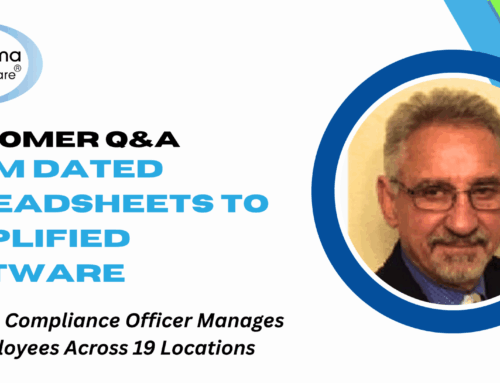
Compliance programs often fail due to preventable situations – from inefficient training to a complete lack of clear, concise procedures and policies. In the ever-evolving healthcare landscape, maintaining compliance with regulations is crucial for the survival and success of any organization.
Compliance training in healthcare helps businesses maintain high standards of patient care and quality control. It also helps to prevent monetary losses, significant cases of administrative burden, and patient safety complaints. Despite the importance of compliance training, many healthcare businesses continue to make critical mistakes that jeopardize the success of their operations as well as the safety of their patients and staff.
Let’s look at where healthcare businesses are missing the mark in compliance and how these mistakes can be corrected.
1. Neglecting Training Needs That Are Role-Specific
One of the most common mistakes healthcare businesses make is adopting a one-size-fits-all approach to compliance training. Multiple businesses consider compliance to be more of a burden rather than an asset or a prerequisite to high-quality care.
With such a large percentage of businesses in the healthcare industry struggling to keep up with compliance and regulations, it’s a mistake to continue using “universal” systems for compliance training and upkeep. While it might seem efficient to provide more uniform training across the board, this will, unfortunately, result in more challenges and gaps in procedural understanding and adherence.
Organizations can avoid this by opting for software that allows compliance officers and training managers to customize employee training paths. Essentially, businesses should prioritize systems that offer role-specific training and progression tracking.
2. Failing to Keep Training Content Up-to-Date
At least 97% of healthcare data generated today goes unused. Having intuitive compliance training software will make training and compliance data more usable, deterring any waste of compiled data. Relying on outdated training materials can lead to more cases of non-compliance. This could potentially result in severe penalties with high financial risk and the chance of compromising patient care.
To stay ahead of regulatory changes and combat this issue, businesses should be investing in a compliance training program that offers regular updates to training content.
3. Lacking Continuous Monitoring of Training
Compliance training shouldn’t be viewed as a one-time event. Instead, businesses have to recognize that it is an ongoing process. Compliance requires continuous monitoring, evaluation, and improvement of both the training processes and materials over time to stay up to date with shifting policies. Without regular assessments, it can become challenging to determine whether a training program is effective or if employees are applying what they’ve learned during their day-to-day operations.
Considering that 90% of new skills learned during training periods are often lost within a year, businesses should focus on training software features like performance and competency monitoring. These types of features will make real-world applications of training simpler for staff and help training managers identify areas for improvement within different departments.
4. Not Prioritizing the Importance of CE Credits
Continuing education (CE) credits and professional certifications help employers prioritize career advancement for their employees while allowing them to focus on their personal growth. Additionally, compliance officers have to consider that continuing education is required in many cases to either obtain or maintain licensure. Having access to professional certifications and compliance training courses within your compliance training software eliminates the need to outsource CE requirements and helps organizations keep their CE program entirely in-house.
To address this, our compliance training program includes robust options for earning CE credits and certifications for advanced courses. By integrating these types of opportunities into your training curriculum, you can enhance employee engagement and stay ahead of industry changes and training requirements.
5. Overcomplicating Training Processes
Many businesses miss the mark with compliance education when they favor manual methods of training and documentation management. This is a popular way to overcomplicate training processes, leading to confusion, miscommunication, and gaps in information.
A simple way to avoid overcomplicating your processes is to opt for robust training software that houses the features you need in one centralized location. This should include training materials, employee training monitoring, CEs, and training tasks and reminders. In short, having one hub for compliance monitoring is the key to streamlining processes throughout your company.
Strengthening Your Compliance Efforts With Effective Training
A compliance training program should advance staff and protect patients. Using compliance training software is a primary way to avoid common hurdles that often cause financial losses, adverse events concerning patient safety, and poor quality of care.
To shift the way you approach training and implement training best practices, start by scheduling a demo today.









